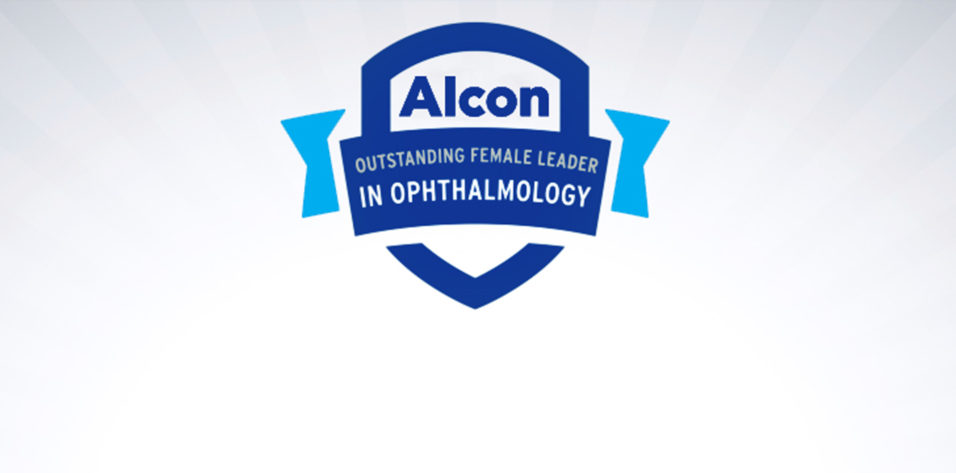
Dr. Khandelwal is an Assistant Professor of Ophthalmology at Baylor College of Medicine in Houston, Texas, and Medical Director for the Lions Eye Bank of Texas.
1. Please share with us your background.
I was born and raised outside of Houston, Texas. I left to attend college at Washington University in St. Louis, where I majored in biology and international studies, with my senior honors thesis on international border economics’ impact on health care. I went to University of Texas at Houston for medical school, followed by a transitional year in Chicago and ophthalmology residency at Emory University. I completed a Lindstrom Fellowship in cornea, cataract, and refractive surgery at Minnesota Eye Consultants in Minneapolis. Then, I returned to Houston to join Baylor—I guess I can’t keep away from Texas! In addition to my private clinic at Baylor, I staff the residents at the VA hospital in Houston and serve as medical director for the Lions Eye Bank of Texas. In my free time, I enjoy reading, working out, trying new restaurants with my husband, and chasing after my 3-year-old twin boys.
2. What is the focus of your current research?
One of my focuses is on optimizing outcomes of cataract and cornea surgery, which includes investigating operative times, safety metrics, and utilization of new technologies to make surgery more efficient. This has led to several publications on resident-performed cataract surgery. I also have a strong focus on keratoconus, having been involved as a resident in the initial studies on crosslinking and serving as associate editor for the Corneal Cross-Linking book. I enjoy the ability to collaborate with our scleral lens department, which is another focus of my research.
3. What has your experience been collaborating with industry?
In working toward my goal to optimize cataract and cornea surgery, I have found that industry helps every step of the way. Each year, new technologies and devices are developed to improve efficiencies in surgery. What I find most impressive is how industry listens to the ideas physicians have on how to best use and improve the technologies.
4. In your opinion, how is the role of women in ophthalmology evolving?
With more women graduating from ophthalmology residency each year, I think the role of women in ophthalmology is growing and evolving. Patients today appreciate and respect female physicians and surgeons more than previous generations. There are also more opportunities for women to speak, write articles, and be involved in national organizations. Other fields outside of medicine have put an emphasis on the promotion and support of women, and it’s about time medicine does the same. I think there is also an understanding that having a work-life balance is not just a female prerogative, but rather a desire of many young doctors.
5. What, if any, hurdles do you feel women in health care still face?
There are still many challenges for women in health care. Studies show that women are paid less than their male colleagues, occupy fewer leadership roles, and are not promoted as commonly in academia. There are also more men in higher tenure track positions than women, despite a relative balance at the junior faculty level. Sometimes, the negative thoughts come from other women physicians, whether they view another female colleague as competition or feel like they went through it the hard way so the next generation should too. But we must be each other’s allies in overcoming these challenges.
6. What advice can you offer to young female ophthalmologists who are still in training or just beginning their careers?
My first piece of advice would be to find great mentors. It’s OK to have multiple mentors, including those who are men or have no medical background. Some of my greatest mentors have been male ophthalmologists who have supported me. It’s important to have a network of people who will support and advise you on various aspects of your career and life. Mentors can be people you trained with, people you work with, or new friends you develop as you move forward in your career.
My second piece of advice would be to cut yourself some slack. There is great pressure to balance it all—to be the best doctor, the super mom, and the supportive wife, while still finding time to work out, eat right, and do it with a smile. I would recommend focusing on the things only you can do, outsourcing everything else, and having a good group of nonjudgmental girlfriends you can laugh with about it all.
7. Can you propose a unique or creative idea that may help women in ophthalmic practices?
In the daily grind, it helps to have other strong women around you. I’m lucky to have that in my group, but most don’t have that opportunity. Connecting with other women in your community becomes that much more important. I think quick ways to connect via an app are excellent in these situations—some channel for you to instantly connect to others who may need a pick-me-up from time to time and who can also offer one in return.
PUBLISHED WORKS
1. Kanakamedala AD, Khandelwal SS. Femtosecond-assisted cataract surgery in residency training. Curr Ophthalmol Rep. In press.
2. Gordon A, Golla A, Weikert MP, Wang L, Khandelwal SS. Comparison of ultrasound pachymetry versus optical coherence tomography in precut Descemet’s stripping automated endothelial keratoplasty. J EBAA. In press.
3. Foster GFL, Allen QB, Ayres BD, et al; ASCRS Challenging Cataract Committee. Surgical options for iris defects during cataract surgery. J Cataract Refract Surg. In press.
4. Khandelwal SS. Monovision LASIK vs. inlays. Ocular Surgery News. March 2019.
5. Khandelwal SS. Optimizing outcomes in cataract surgery. Ocular Surgery News. February 2019.
6. Golan O, Piccinini AL, Hwang ES, et al. Distinguishing highly asymmetric keratoconus eyes using dual Scheimpflug/Placido analysis [published online February 2, 2019]. Am J Ophthalmol. 2019. doi:10.1016/j.ajo.2019.01.023.
7. Khandelwal SS, Jun J, Mak S, Booth MS, Shekelle PG. Effectiveness of multifocal and monofocal intraocular lenses for cataract surgery and lens replacement: a systematic review and meta-analysis [published online January 10, 2019]. Graefes Arch Clin Exp Ophthalmol. doi:10.1007/s00417-018-04218-6.
8. Lang PZ, Hafezi NL, Khandelwal SS, Torres-Netto EA, Hafezi F, Randleman JB. Comparative functional outcomes after corneal crosslinking using standard, accelerated, and accelerated with higher total fluence protocols. Cornea. 2019;38(4):433-441.
9. Khandelwal SS. Lower energy surgery delivered with and without femtosecond laser. Ocular Surgery News. December 2018.
10. Campagna G, Chamberlain P, Orengo-Nania S, Biggerstaff K, Khandelwal SS. Ophthalmic conditions associated with inpatient falls among veterans. Optom Vis Sci. 2018;95(12):1114-1119.
11. Golla A, Wang L, Morris C, Weikert MP, Khandelwal SS. Repeatability of central corneal thickness measurements of donor corneas in preservation chamber using Fourier-domain anterior segment optical coherence tomography. Cell Tissue Bank. 2018;19(4):717-720.
12. Campagna G, Al-Mohtaseb Z, Khandelwal SS, Chang E. Sequential traumatic corneal open globe rupture in a patient with osteogenesis imperfecta type I. Am J Ophthalmol Case Rep. 2018;11:35-36.
13. Chamberlain PD, Montes de Oca I, Shah R, et al. Preoperative prediction of the optimal toric intraocular lens alignment meridian. J Refract Surg. 2018;34(8):515-520.
14. Foster GFL, Allen QB, Ayres BD, et al; ASCRS Challenging Cataract Committee. Phacoemulsification of the rock-hard dense nuclear cataract: options and recommendations. J Cataract Refract Surg. 2018;44(7):905-916.
15. Lang PZ, Thulasi P, Khandelwal SS, Hafezi F, Randleman JB. Comparing change in anterior curvature after corneal cross-linking using scanning-slit and Scheimpflug technology. Am J Ophthalmol. 2018;191:129-134.
16. Khandelwal SS, Randleman JB. OCT findings in cornea cross linking. In: Randleman JB, Hafezi F, Khandelwal SS, eds. Cornea Cross-Linking. 2nd ed. Thorofare, NJ: Slack; 2018.
17. Khandelwal SS, Jun J, Mak S, et al. Comparative effectiveness of multifocal, accommodative, and monofocal intraocular lenses for cataract surgery and lens replacement. Washington, DC: Department of Veterans Affairs (US); January 2018.
18. Champagna G, Adams M, Wang L, Khandelwal S, Al-Mohtaseb Z. Comparison of pterygium recurrence rates among different races and ethnicities after primary pterygium excision by surgeons in training. Cornea. 2017;37(2):199-204.
19. Kostroun K, Khandelwal SS. Diagnostics in dry eye. Int Ophthalmol Clin. 2017;57(3):27-46.
20. Brunin G, Khan K, Biggerstaff KS, Wang L, Koch DD, Khandelwal SS. Outcomes of femtosecond laser-assisted cataract surgery performed by surgeons-in-training. Graefes Arch Clin Exp Ophthalmol. 2017;255(4):805-809.
21. Khandelwal SS. Weighing the options: learning points from a hard-to-navigate case. Cataract & Refractive Surgery Today. November 2017.
22. Khandelwal SS. Toric lenses: the basics. MillennialEYE. October 2017.
23. Khandelwal SS. Surgical complexities. Cataract & Refractive Surgery Today Europe. October 2017.
24. Khandelwal SS, Montes De Oca I. The end of an era. Cataract & Refractive Surgery Today. September 2017.
25. Khandelwal SS. LVC in a truly millennial era. Cataract & Refractive Surgery Today Europe. August 2017.
26. Montes de Oca I, Kim EJ, Wang L, et al. Accuracy of toric intraocular lens axis alignment using a 3-dimensional computer-guided visualization system. J Cataract Refract Surg. 2016;42(4):550-555.
27. Schmidt CM, Sundararajan M, Biggerstaff KS, Orengo-Nania S, Coffee RE, Khandelwal SS. Indications and outcomes of resident-performed cataract surgery requiring return to the operating room. J Cataract Refract Surg. 2016;42(3):385-391.
28. Thulasi P, Khandelwal SS, Randleman JB. Intraocular lens alignment methods. Curr Opin Ophthalmol. 2016;27(1):65-75.
29. Kim EJ, Montes de Oca I, Wang L, Weikert MP, Koch DD, Khandelwal SS. Repeatability of posterior and total corneal curvature measurements with a dual Scheimpflug-Placido tomographer. J Cataract Refract Surg. 2015;41(12):2731-2738.
30. Brunin G, Khandelwal SS, Coffee RE, Biggerstaff KS. Outcomes of anterior chamber lenses placed by surgeons in training. J Cataract Refract Surg. 2015;41(10):2102-2106.
31. Khandelwal SS, Randleman JB. Current and future applications of corneal collagen cross-linking. Curr Opin Ophthalmol. 2015;26(3):206-213.
32. Randleman JB, Khandelwal SS, Hafezi F. Corneal cross-linking. Surv Ophthalmol. 2015;60(6):509-523.
33. Khandelwal SS, Davis EA. Refractive enhancement after prior LASIK. In: Henderson B, Yoo S, Chang D, eds. Curbside Consultation in Refractive and Lens Surgery. Thorofare, NJ: Slack; 2014.
34. Khandelwal SS, Lindstrom RL. Counseling regarding premium IOLs. In: Henderson B, Yoo S, Chang D, eds. Curbside Consultation in Refractive and Lens Surgery. Thorofare, NJ: Slack; 2014.
35. Khandelwal SS, Hardten DR, Lindstrom RLL. My patient wants enhanced depth of focus and spectacle independence. How should I decide between monovision or a presbyopia-correcting intraocular lens? In: Kim T, Chang D, eds. Curbside Consultation in Cataract Surgery. Thorofare, NJ: Slack; 2014.
36. Khandelwal SS. IOL basics. Cataract & Refractive Surgery Today. May 2014; 15-16.
37. Khandelwal SS, Grossniklaus HE, Randleman JB. Corneal scarring from laser in situ keratomileusis after epikeratoplasty: clnical and histopathologic analysis. J Cataract Refract Surg. 2013;39(3):467-470.
38. Khandelwal SS, Reeves SW. Keratoconus. Minnesota Physicians. May 2013; 25-26.
39. Khandelwal SS, Grossniklaus HE. Corneal tumors. In: Grossniklaus HE, Wells JR, Singh AD, Bergstrom C, eds. Pocket Guide to Ocular Oncology and Pathology. New York, NY: Springer; 2012: 157-166.
40. Khandelwal SS, Grossniklaus HE. Ciliary body-fuchs adenoma. In: Grossniklaus HE, Wells JR, Singh AD, Bergstrom C, eds. Pocket Guide to Ocular Oncology and Pathology. New York, NY: Springer; 2012: 219-222.
41. Khandelwal SS, Woodward MA, Hall TA, Grossniklaus HE, Stulting RD. Treatment of microsporidia keratitis with topical voriconazole monotherapy. Arch Ophthalmol. 2011;129:509-510.
42. Subramanyam S, Wojno T, Grossniklaus HE. Orbital clear cell meningioma with anaplastic features. Ophthalmol Plast Reconstr Surg. 2011;27:227-310.
43. Yadav UC, Subramanyam S, Ramana KV. Prevention of endotoxin-induced uveitis in rats by benfotiamine, a lipophilic analogue of vitamin B1. Invest Ophthalmol Vis Sci. 2009;50:2276-2282.
44. Zhao X, Nakamura H, Subramanyam S, et al. Spontaneous and inheritable R555Q mutation in TGFBI/BIGH3 in two unrelated families exhibiting Bowman’s layer corneal dystrophy. Ophthalmology. 2007;114(11):e39-46.
PROFESSIONAL SOCIETY MEMBERSHIPS
- American Academy of Ophthalmology (AAO) | 2010–Present
- American Society of Cataract and Refractive Surgery (ASCRS) | 2011–Present
- American European Congress of Ophthalmic Surgery (AECOS) | 2015–Present
- CEDARS/ASPENS Society | 2016–Present
- Houston Ophthalmology Society | 2014–Present
HONORS AND AWARDS
- Early Career Faculty Award for Excellence in Patient Care, BCM | 2019
- ASCRS-ESCRS Young Ophthalmologist Exchange Program Award | 2016
- Houstonia Top Doctors | 2016, 2018
- OSN Premier Surgeon 300 | 2016–2018


